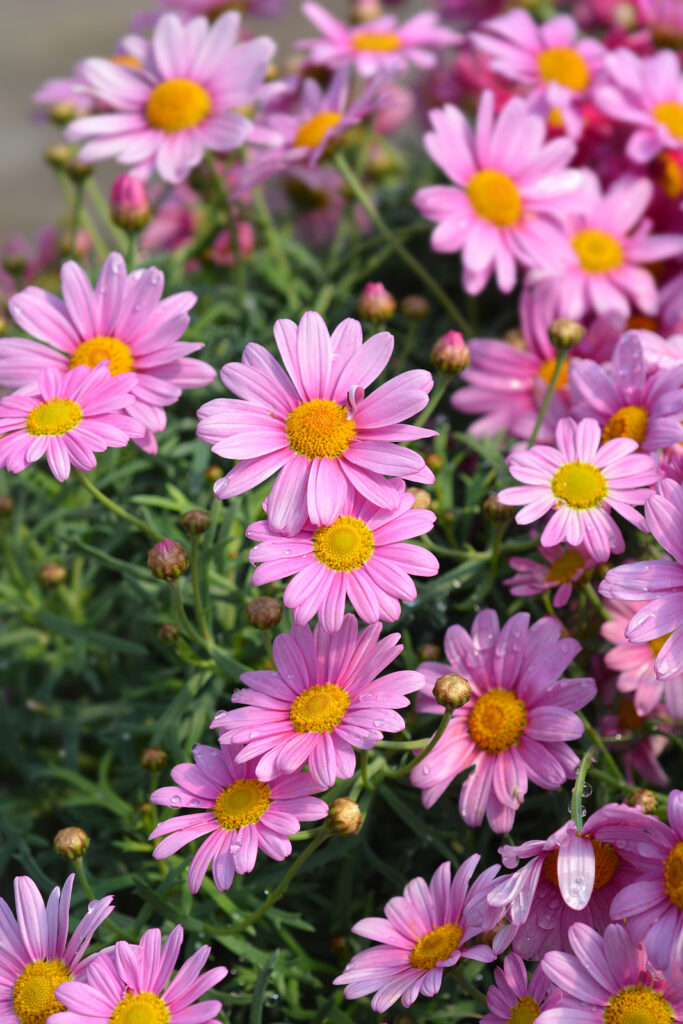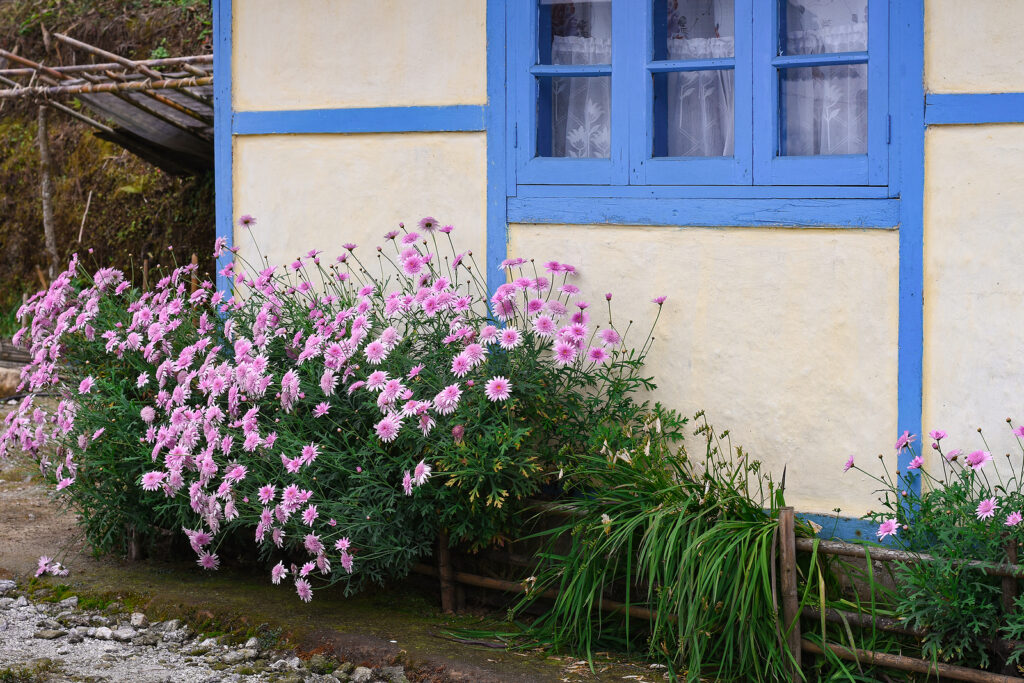Argyranthemum–commonly called Marguerite daisy–is a subtropical evergreen subshrub that is grown for its display of prolific daisy-like flowers. Argyranthemum is sometimes confused with and sold as chrysanthemums.
Argyranthemum bears loose corymbs of daisy-like single, sometimes anemone-centered or double flowerheads in white, rose-pink, yellow, or apricot. Plants grow from 18 to 36 inches (45-90cm) tall and wide and are nearly completely covered with blossoms when in bloom. The leaves are entire to finely dissected or lobed; they vary from green to glaucous.
Argyranthemum can be grown in beds and borders in frost-free regions. They grow best in moderately fertile, well-drained soil in full sun.
Argyranthemum is a genus of 23 species of spreading to erect evergreen subshrubs native from the Canary Islands to Madeira.
Get to Know Argyranthemum
- Plant type: Evergreen subshrub
- Growing zones and range: Zones 10-11
- Hardiness: Tender; grow in frost-free regions
- Height and width: 12 to 36 inches (30-90cm) tall and wide
- Foliage: Finely dissected or coarsely lobed green leaves 2 to 4 inches (5-10cm) long
- Flowers: Loose corymbs of daisy-like singl, sometimes anemone-centered or double flowerheads in white, rose-pink, yellow, or apricot colors
- Bloom time: Spring to early autumn
- Uses: Bedding, borders, containers
- Common name: Marguerite daisy
- Botanical name: Argyranthemum
- Family name: Asteraceae
- Origin: Canary Islands and Madeira

Where to Plant Argyranthemum
- Light outdoors: Plant Argyranthemum in full sun.
- Soil outdoors: Grow in well-drained moderately fertile soil.
- Argyranthemum species will tolerate sea winds.
When to Plant Argyranthemum
- Set container-grown outdoors Argyranthemum oudoors in spring or summer
Planting and Spacing Argyranthemum
- Space Argyranthemum 24 to 36 inches (60-90cm) apart.
How to Water and Feed Argyranthemum
- Water Argyranthemum moderately; keep the soil evenly moist and avoid letting the soil dry out.
- Fertilize Argyranthemum will a liquid all-purpose fertlizer montly duirng the growing season.
Argyranthemum Care
- Where marginally hardy, apply a deep, dry winter mulch.
- Take cuttings as insurance against winter loss; if top-growth is killed to the gound, plants will regenerate from the base in spring.
- Pinch out the growing tips to encourage compact growth.
- Plants can be trained as standards.
Argyranthemum Pests and Diseases
- Coarse-leaves specis of Argyranthemum are prone to crown gall and leaf miner,

Argyranthemum Propagation
- Root greenwood or semi-ripe cutting of non-flowering shoots in late summer or midspring.
- Overwinter young plants in a cool greenhouse.
Argyranthemum Varieties to Grow
- Argyranthemum foeniculaceum. Compact subshrub grows to 32 inches (80cm) tall and wide with finely dissected blue-gray leaves; white flower heats sligtly more than 1 inch across; yellow disc florets.
- A. frutescens. Rounded subshrub, grows to 28 inches (70cm) tall and wide; coarsely disected bright green flowers and profuse whie or pink flowrheads with yellow disk florets.
- A. gracile, A. ‘Chelsea Girl.’ Compact subshrub to 24 inches tall and wide; gray-green leaves; bears white flowers with yellow disk flowers.
- A. maderense. Compact subshrub to 12 inches tall and 20 inches wide; bears lemon-yellow flowerheads. Cultivars include ‘Mary Cheek’ with light pink flowers, ‘Mary Wootton’ with light pink flowerheads, ‘Petite Pink’ with light pink flowerheads, ‘Snowstorm’ with white flowerheads.



